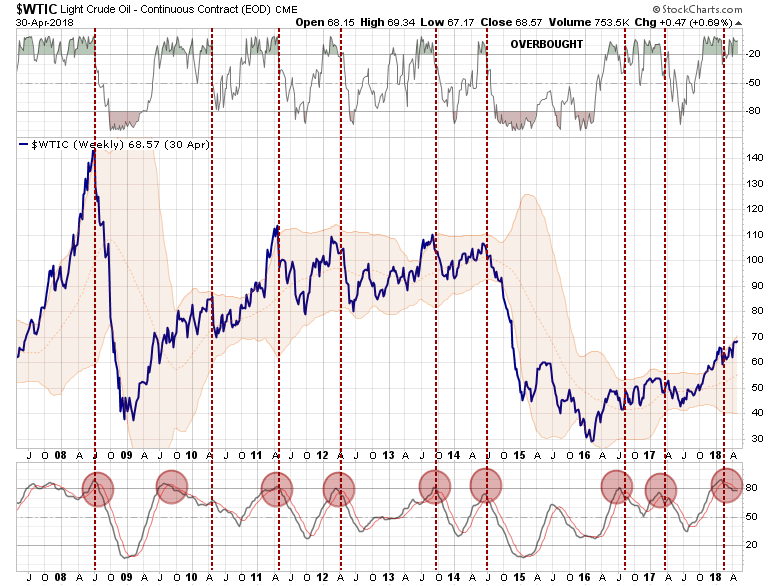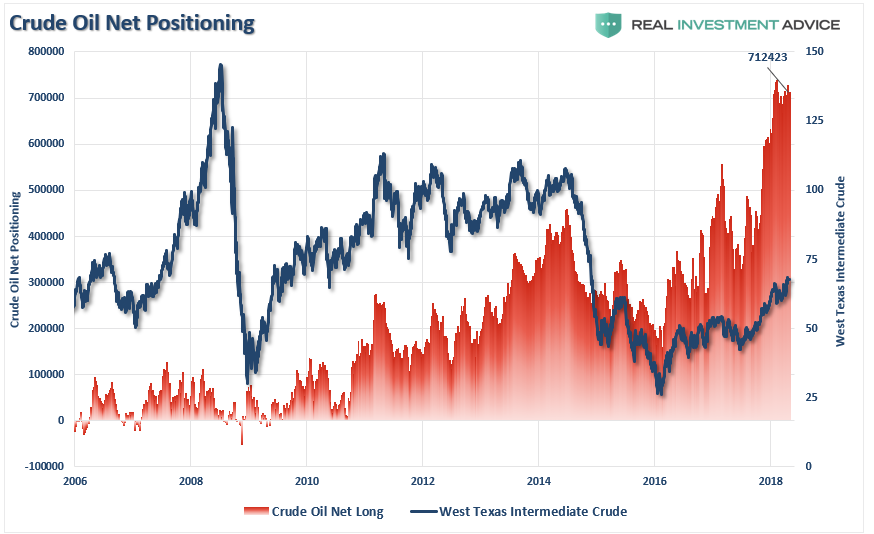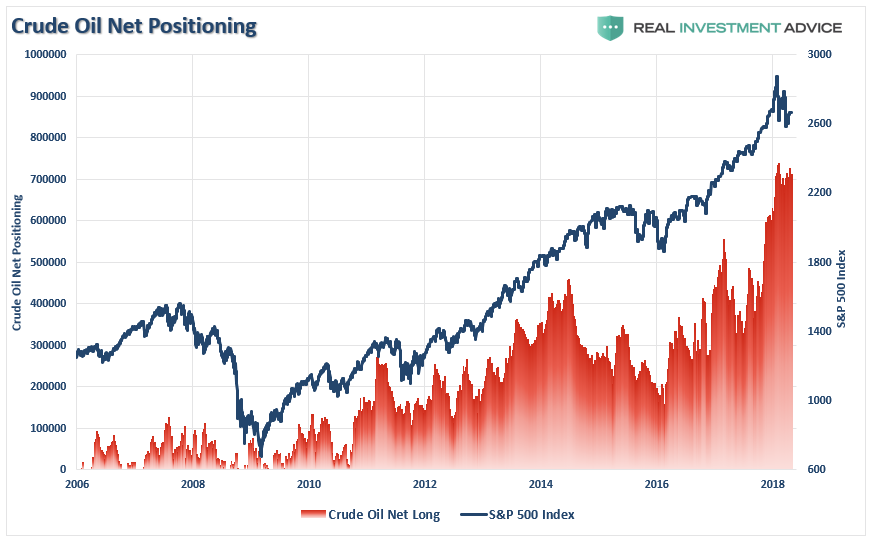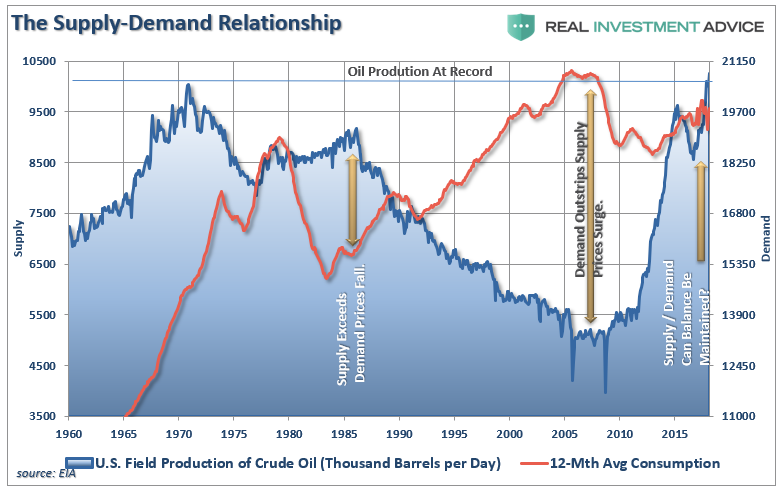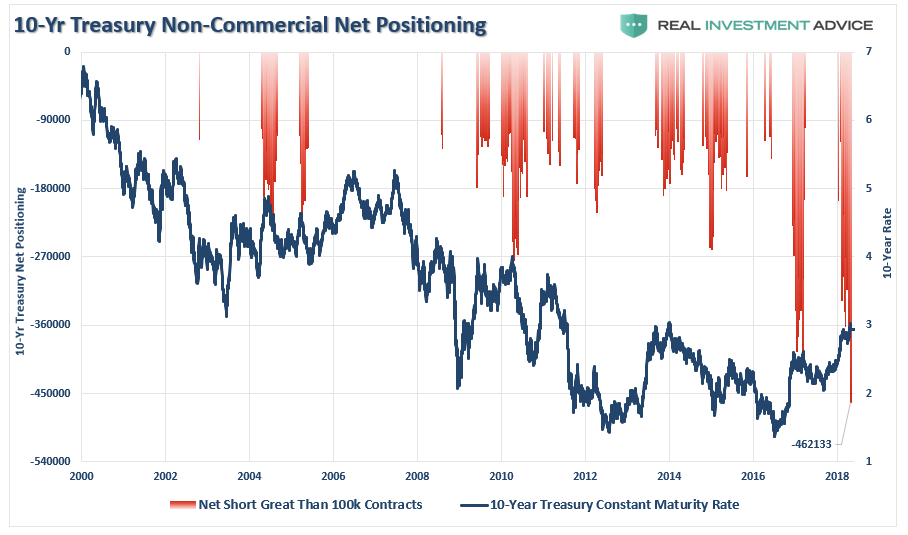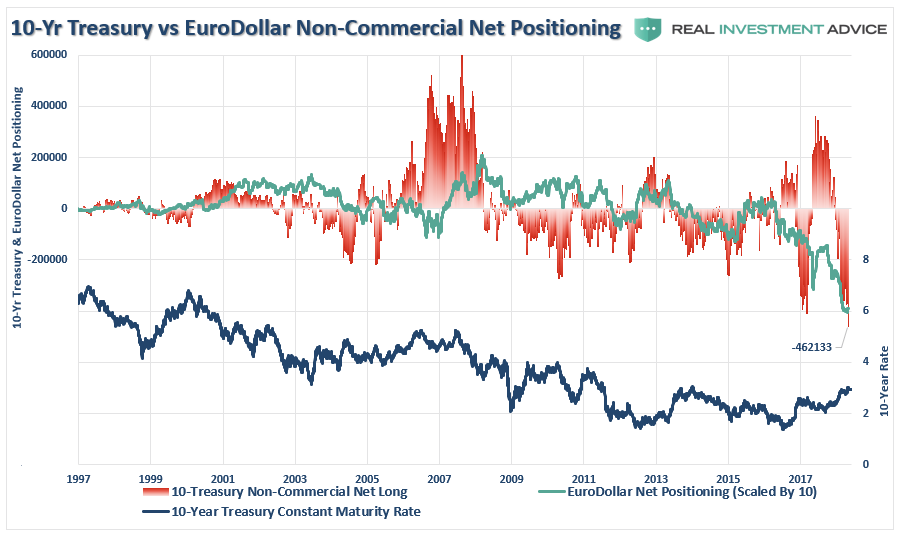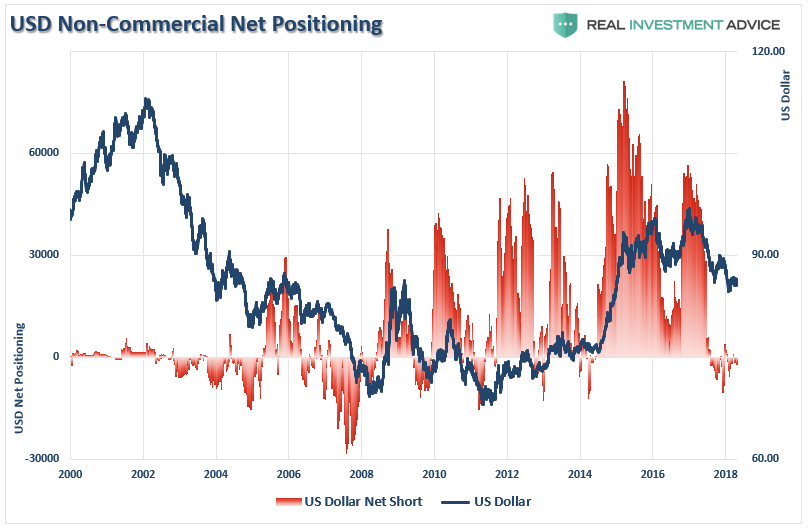In early 2018, I penned a post which illustrated the legendary Bob Farrell’s 10-investment rules. Bob, one of the great investors of our time, had a very pragmatic approach to managing money. Investing rules, and a subsequent discipline, should be a staple for any investor who has put their hard earned “savings” at risk in the market. Unfortunately, far too many invest without either which leads to less than desirable outcomes.
As of late, there has been a lot of excitement over two areas of the market in particular: interest rates and oil prices. In fact, at this moment the speculation in these two areas is at record levels.
Why is that important?
First, the speculation that oil and interest rates will go higher are the two areas which have the greatest negative impact on economic growth and earnings. Rising interest rates increase borrowing costs and higher oil prices increase input costs for manufacturers. As I noted previously, with a heavily indebted consumer, there is little ability to pass on higher costs which, if absorbed, reduces profits.
Secondly, the speculation brings forward two of Mr. Farrell’s most important rules:
- Rule #2: Excess in one direction will lead to an opposite excess in the other direction, and;
- Rule #9: When all the experts and forecasts agree – something else is going to happen.
Currently, when it comes to oil prices, there is little room left for more bullishness. As oil prices have risen due to concerns over the potential supply concerns from geopolitical tensions, the price of oil is now as overbought and extended as at every other prior peak.
Of course, the cycle of rising oil prices leading to increased optimism which begets bullish bets on oil continues to press prices higher. However, it is also the exuberance which has repeatedly set up the next fall. As shown below, bets on crude oil prices are sitting near the highest levels on record and substantially higher than what was seen at the peak of oil prices prior to 2008 and 2014.
Importantly, while bullish bets on oil are at extremes, there is also a high correlation between the direction of oil and the S&P 500. (Importantly, rising oil prices have been a major contributing factor to the rise in earnings for the S&P 500. A reversal in prices will be problematic as well.)
As JPM recently noted, via Zerohedge,
Lance Roberts
Lance Roberts is a Chief Portfolio Strategist/Economist for Clarity Financial. He is also the host of “The Lance Roberts Show” and Chief Editor of the “Real Investment Advice” website and author of “Real Investment Daily” blog and “Real Investment Report“. Follow Lance on Facebook, Twitter and Linked-In

